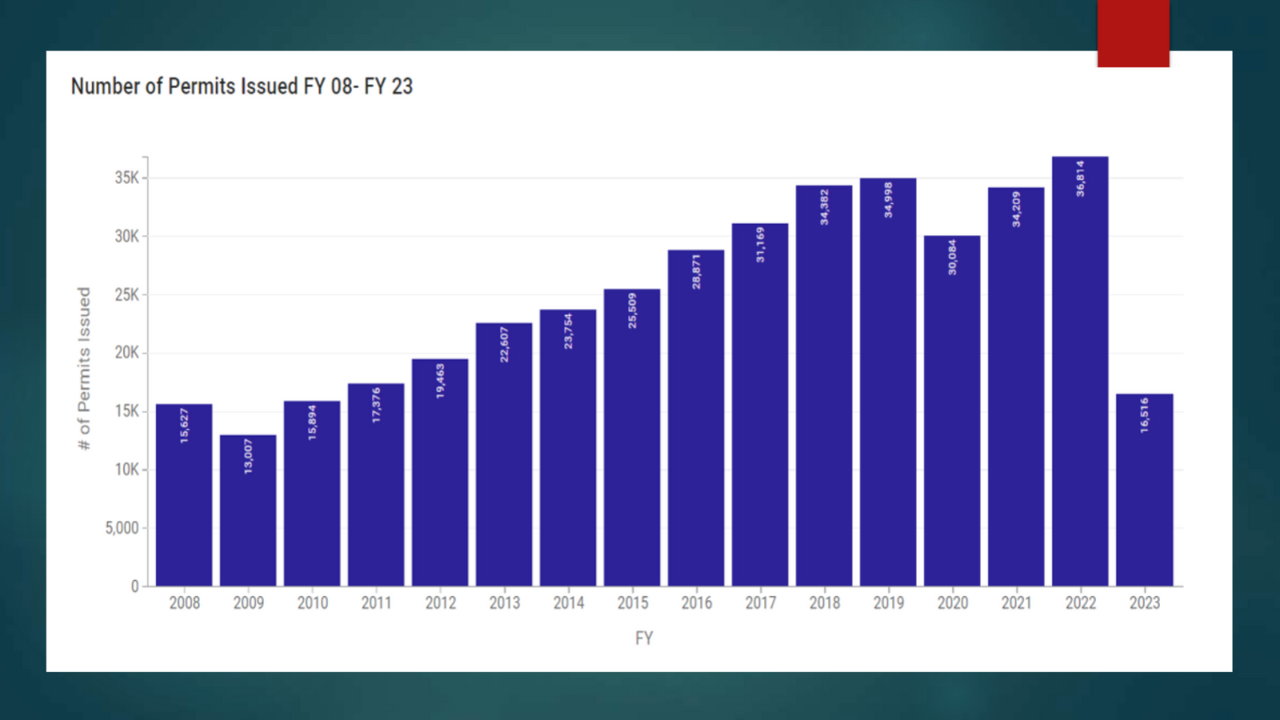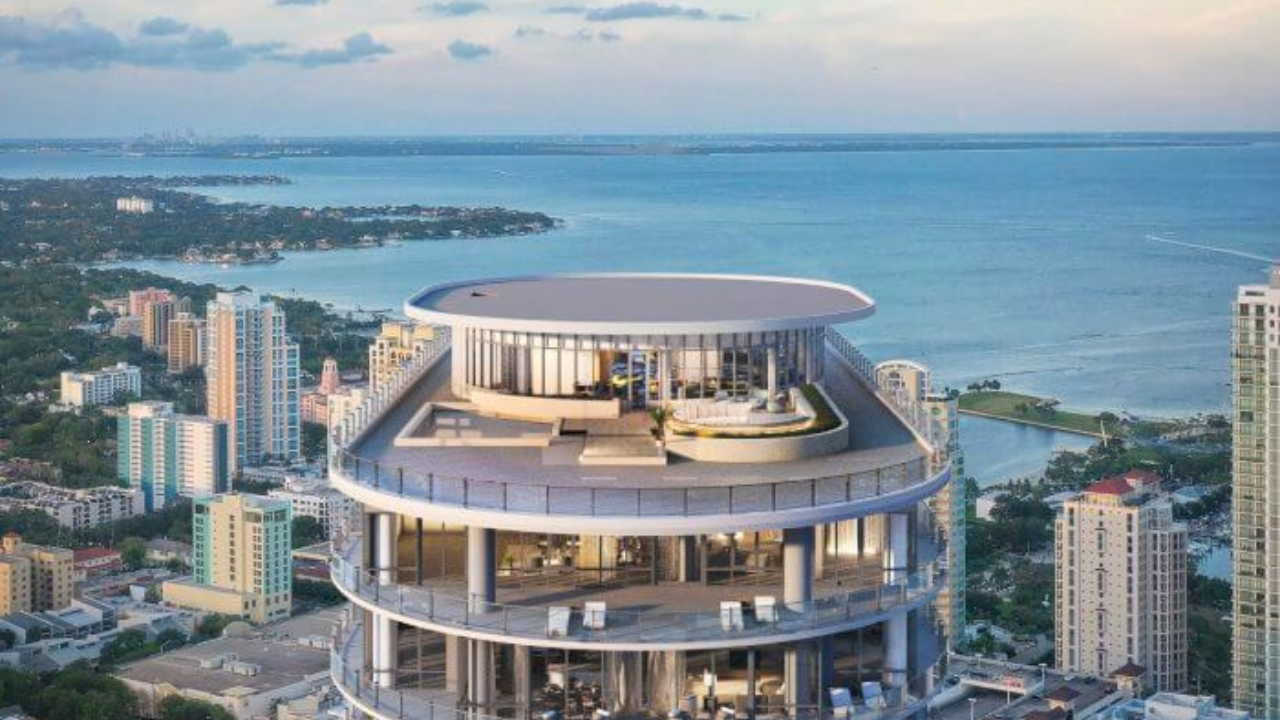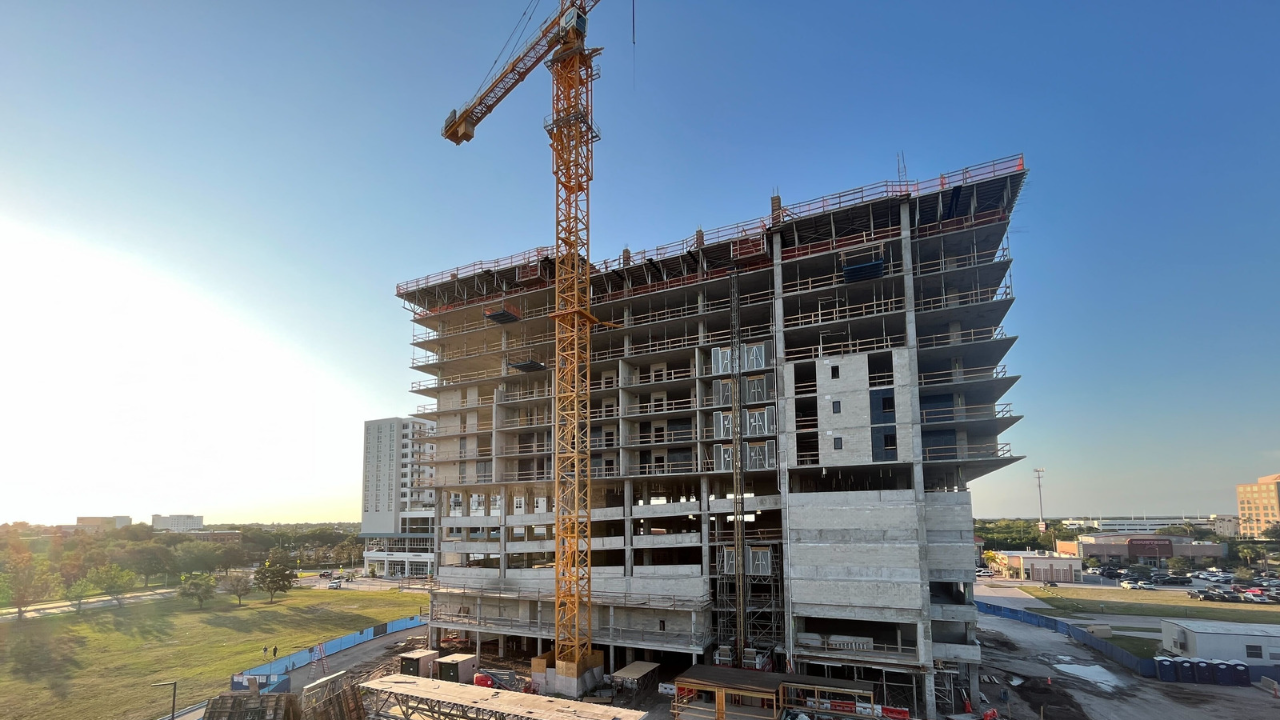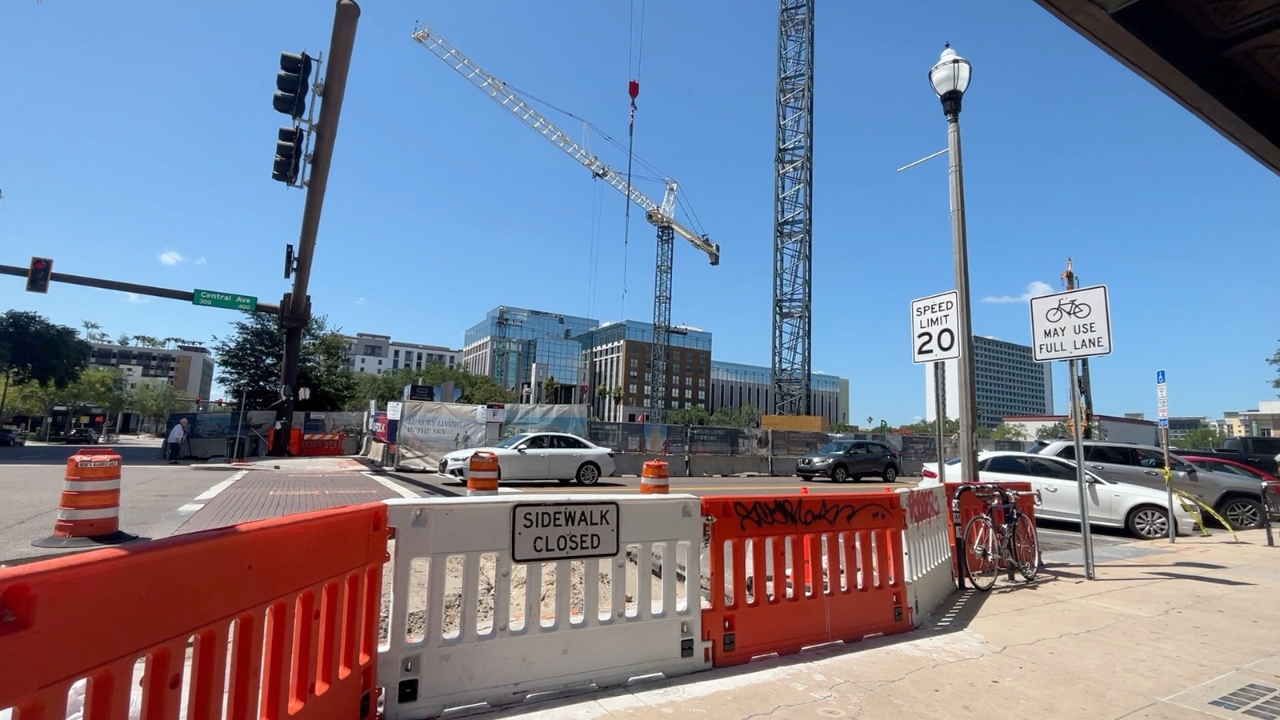ST. PETERSBURG, Fla. — New residential construction data shows the Sunshine State is breaking more records when it comes to growth, with residential building permits increasing 38% since 2019.
Real estate software company Point2 Homes looked into permit and zoning trends for residential construction across the U.S. and found Florida ranks second in the country with more than 212,000 building permits issued in 2022, second to Texas and followed by California.

That’s up about 58,000 permits since pre-pandemic.
St Petersburg’s building official confirms they’re seeing record construction growth.
"Our last year, record year, we were 30% higher than the previous year," said City of St Pete Building Official Don Tyre. "It's all aspects; it's not just the high rises, it's multifamily, single family, businesses, a lot of renovations. You know, a lot of St Pete is redevelopment, you know, because we don't have a lot of vacant land; a lot of it is tear down and rebuild."

One of those projects is the Residences at 400 Central.
It used to be known as the old bank 'cheesegrater building' and the Pheil Hotel, but after years of permitting and demolition, Suffolk Construction is about to pour one of the largest concrete foundations in St Pete's history — making way for the Gulf Coast’s tallest high rise yet.
"A residential high rise 46 stories, 301 condos," explained Chris Lewis, the project executive with Suffolk Construction, "We are currently at the foundation phase. What you see behind me is the matte foundation; it essentially becomes a big solid mass of concrete that becomes the foundation for the superstructure."

It's just one of the nearly 40 residential projects currently underway in the city, according to St. Pete Rising.
"We've seen a boom. You know, right now, we probably have a half dozen high-rise construction projects coming out of the ground," Tyre said.
According to the city's data, 2018 and 2019 had more than 34,000 building permits, 2020 dipped to 30,000, 2021 had 34,200 and 2022 saw 36,800 permits issued.
In the first four months of this year, the city issued 16,500 permits.
Tyre said his staff is working overtime.
"We have 12 plan review staff, 24 inspectors, and about 30 support staff and different roles," he exclaimed. "We are all doing overtime; they’re going out the door with 20 inspections a day."
"All different demographic classes are coming to the Florida area. One of the big reasons is for taxation... and also the job market is very strong," explained Doug Ressler, Business Intelligence for Yardi, the parent company of Point2 Homes, who facilitated the national research on residential construction.
Overall, the study found nearly 1.7 million permits issued in 2022, down slightly from 2021, when the country saw an 18% increase in permits from the infamous pandemic year.
“With 593,800 permits, Texas, Florida and California made up more than one-third of the total number of housing structures authorized in the U.S. in 2022,” the study noted.

In Florida, 2022 issued a total of 212,206 residential building permits:
- 4,500 for two to four-unit buildings
- 74,000 for five or more unit buildings
- 134,000 for single-unit buildings
“A lot of the reason for that is for the affordability,” explained Ressler. “If I'm going to build a house, I'm going to try and build to the demand, but also, I want to minimize my costs. So what you'll see is smaller homes being built.”
The demand is much greater for these units since the pandemic, with nearly 150,000 permitted in 2021.
The Tampa Bay metro area also has one of the biggest year-over-year increases in the number of permits, with 21% more permits issued in 2022 compared to 2021 at nearly 30,000 permits.
It’s closely followed by the Orlando-Kissimmee metro area but in stark contrast to Miami-Fort Lauderdale, which is down nearly 22% for permitting.
Florida also leads the medium-size metro areas for permitting, with North Port-Sarasota-Bradenton, Cape Coral-Fort Myers, and Lakeland-Winter Haven topping the list.
Due to the record growth, St. Pete even had to reduce permit fees. The building department doesn’t take from the city’s general fund, so they can only hold so much revenue in their reserves.

“We had a little bit too much money in our overall cap, and you're only allowed to carry the average of the last four years' operating expenses as a reserve. So we reduced the fees for 25% because it was record construction,” Tyre explained.
Lewis adds that Suffolk Construction has about 25 projects across the Sunshine State, primarily high-rise residential buildings.
“There is such a huge demand for these buildings and people moving into the state of Florida from elsewhere. It's a great thing for Florida. And it's a great thing for the construction market,” Lewis said.
To read more about the study and trends in the construction worker industry, click here.




